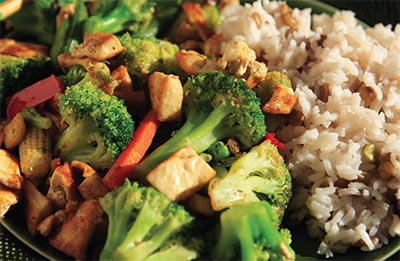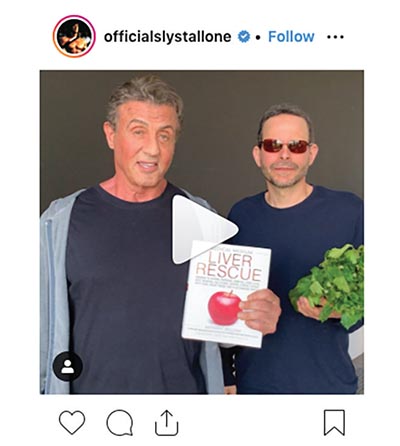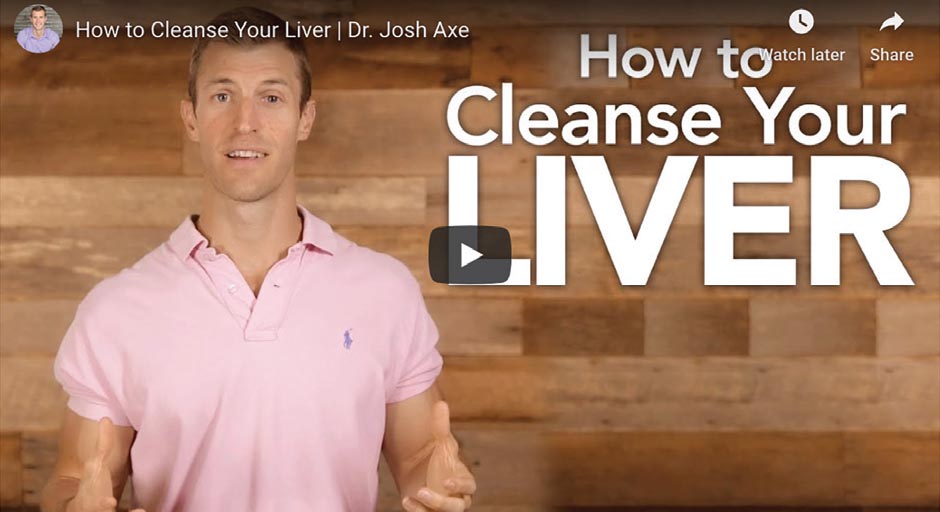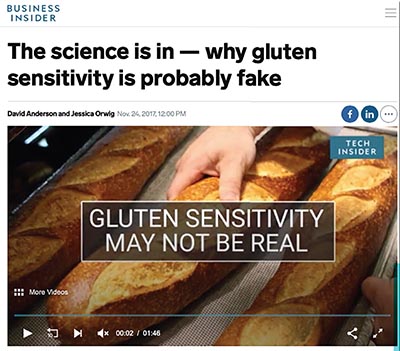Hot Topics: What to know about the latest trends

geralt - pixabay.com.
Are “antinutrients” robbing your body of vitamins and minerals? Is celery juice a miracle healing tonic? Does your liver need a boost from supplements and coffee enemas? What’s behind gluten sensitivity? Here’s what to know about the nutrition trends du jour.
Antinutrients
Antinutrients “can be a source of severe food cravings that distract you from whatever you’re trying to accomplish, or they can rob you of nutrients and interfere with your hormone function, wearing down different systems in your body and causing slow performance declines over time,” claims Dave Asprey in his book The Bulletproof Diet.
Are you being robbed?
“Antinutrients are compounds in food that can interfere with the absorption of some nutrients,” says Reed Mangels, retired adjunct associate professor of nutrition at the University of Massachusetts Amherst. But they may not matter. For example:
■ Lectins. They’re found in whole grains, beans, and some other foods. If not thoroughly cooked, lectins can damage cells lining the digestive tract and may prevent nutrients from being absorbed.1 But who’s eating raw grains or beans?
■ Oxalate. “Spinach has some calcium, but you don’t absorb most of it because oxalate ties it up,” says Mangels. But most people don’t rely on spinach for their calcium.
■ Goitrogens. They’re found in soy and cruciferous vegetables like kale and Brussels sprouts, and they can interfere with the thyroid gland’s ability to take up iodine and make thyroid hormones.
“But as long as you’re getting enough iodine, which most people are, there’s no need to worry,” notes Mangels.
■ Phytate. The phytate in whole grains, beans, nuts, and seeds binds to zinc and iron, so you absorb less of the minerals than you do from eating fish, poultry, or meat.

“Of all the antinutrients, I think about phytates the most because they’re in a lot of foundational foods for vegetarians,” says Mangels. But people eating plant-heavy diets needn’t worry.
In one study, researchers fed 21 young women a vegetarian diet or a typical U.S. diet for eight weeks each.2 The vegetarian diet had more beans, whole grains, and vegetables and roughly triple the phytate of the non-vegetarian diet.
The vegetarian diet contained 14 percent less zinc, and the women absorbed 21 percent less of it, so they got 35 percent less zinc on the vegetarian than on the non-vegetarian diet. But their blood zinc levels were only 5 percent lower, and they were still within the normal range.
“The study’s results suggest that the women absorbed enough zinc to replace what they excreted, and that zinc requirements can be met with a vegetarian diet rich in whole grains and legumes,” says study author Janet Hunt, retired research nutritionist at the U.S. Department of Agriculture.
The women also absorbed roughly 70 percent less non-heme iron from the vegetarian diet.3 (Non-heme iron, which is found in plant-based foods, isn’t as well absorbed as heme iron, which is found in meat, poultry, and seafood.)
“But the women had no signs of iron deficiency or anemia when they were on the vegetarian diet,” says Hunt. “That’s consistent with other studies that show reduced iron stores, but minimal or no difference in the occurrence of iron-deficiency anemia, in vegetarians.”
Hunt’s takeaway: “The body does a pretty good job at adapting to changes in the amount and availability of minerals in the diet to maintain an equilibrium.”
So much for robbing your body of nutrients.
What’s more, sprouting or fermenting can slash phytates.
“Fermented soy products like tempeh have less phytate than tofu,” Mangels notes. “You’ll also get less phytate from bread leavened by yeast, as opposed to muffins or biscuits made with baking powder.”
“It’s absurd to knock whole grains, beans, nuts, and veggies out of your diet to avoid something that’s probably not harming your nutritional status in the first place.”
1Plant Foods Hum. Nutr. 43: 63, 1993.
2Am. J. Clin. Nutr. 67: 421, 1998.
3Am. J. Clin. Nutr. 69: 944, 1999.
Celery Juice
“I believe that celery juice is a miracle juice and that it’s one of the greatest healing tonics of all time,” writes Anthony William on goop.com.
The self-proclaimed “Medical Medium” says that his knowledge about health comes from a voice he hears that he calls “Spirit.”
William recommends drinking 16 ounces of fresh celery juice with nothing added—or it will lose its healing benefits, he says—on an empty stomach every day. Voilà!
Celery juice can help reverse Alzheimer’s disease, prevent cancer and hair loss, manage addiction, promote weight loss, clear up acne, reduce inflammation, combat night sweats, heal digestive problems, fight off unwanted bacteria and viruses, and much more, promises William in his book titled (what else?) Celery Juice.
Really?
“Celery has some nutrients, but it’s no superstar,” says Lisa Young, adjunct professor of nutrition at New York University. For example, ounce for ounce, kale has roughly 10 times more vitamins A and K and 30 times more vitamin C.

Looking for research on celery juice? Good luck.
No problem, says William. There are “undiscovered healing properties inside celery juice that medical research and science are not yet aware of,” claims his website.
“A couple of small, short-term studies on celery were done in people, but the rest were done on lab animals,” says Young. And the few human studies—which reported that (far more concentrated) celery extract lowered high blood pressure or blood sugar, for example—had serious flaws, like no control group.1,2
So why do so many people swear by celery juice?
“Maybe they’re not healthy eaters to start with,” Young offers. “So instead of starting their morning off with a cinnamon roll, they’re getting some nutrients and water from the celery juice. They feel good—maybe because they expect to—so they think it’s some kind of miracle.”
“But focusing on one vegetable in large doses is problematic because you can lose sight of the total diet,” she adds. “We need a variety of fruits and vegetables for good health.”
1Nat. Med. J. 2013. www.naturalmedicinejournal.com.
2Saudi Med. J. 39: 154, 2018.
Liver Cleanse
“With exposure to environmental toxins, toxic body care products and processed foods, most people are in desperate need of a serious detox!” proclaims draxe.com, the website of chiropractor Josh Axe. “A liver cleanse is a great way to do this.”
Axe is talking about coffee enemas, juice-only or other restrictive diets, and liver cleanse supplements with ingredients like milk thistle, turmeric, and dandelion root.
Do you need them?
“The liver is the metabolic powerhouse of the body,” says Monica Tincopa, director of the Michigan Medicine Non-Alcoholic Fatty Liver Disease Clinic. “It processes nutrients and metabolizes medications. It also plays a vital role in clearing toxins.”
“But unless you have severe liver disease or are exposed to a high dose of a toxic chemical, your body has a natural capacity to process whatever you ingest as well as the waste products your body makes.”
Tincopa’s bottom line: “There’s no evidence that these supplements help boost the liver’s ability to clear toxins.” And although most liver cleanse supplements appear to be safe, “a few cases of liver damage have been linked to supplements like turmeric, so I emphasize to patients that there’s no benefit in trying them.”1

What’s more, when researchers tested roughly 100 milk thistle supplements, 60 percent were contaminated with yeast or mold.2
And Axe’s enthusiasm notwithstanding, there are no grounds for thinking that coffee enemas do anything.
What’s the evidence that they have “a stimulating effect that increases bile flow, helping to jump-start both your gallbladder and your liver,” as Axe claims?
Zilch. And coffee enemas don’t end well for some people.
“In one case, a woman developed severe inflammation of the colon and rectum after a coffee enema,” notes Tincopa.3 “And three deaths have been linked to coffee enemas, possibly due to a bacterial infection or electrolyte imbalances.”4,5
1Case Reports Hepatol. 2019. doi:10.1155/2019/6741213.
2Int. J. Food Microbiol. 164: 87, 2013.
3Am. J. Gastroenterol. 105: 229, 2010.
4West. J. Med. 140: 460, 1984.
5JAMA 244: 1608, 1980.
Gluten Sensitivity
“The science is in—why gluten sensitivity is probably fake,” ran the headline on businessinsider.com in 2017. Gluten, a protein found in wheat, barley, and rye, can cause intestinal damage in people with celiac disease. (That’s why they need to avoid those grains.) Some people who don’t have celiac disease have been diagnosed with non-celiac gluten sensitivity because they report symptoms like nausea, vomiting, diarrhea, bloating, headache, fatigue, or joint pain when they eat gluten.
What exactly is gluten sensitivity?
“The honest answer, at this point, is that we don’t really know,” says Daniel Leffler, director of clinical research at the Celiac Center at Beth Israel Deaconess Medical Center in Boston.
There’s no lab test to diagnose gluten sensitivity. “But there is a group of patients who don’t have celiac, but have symptoms that are reproducibly improved when they avoid gluten and get worse when they’re exposed,” Leffler explains. “We just don’t know how large that group is.”
It may be small.
In half a dozen studies that fed either gluten or a placebo to people with suspected gluten sensitivity, only about 15 percent had symptoms after eating gluten but not after eating the placebo.1-3
So why do so many people think they’re sensitive to gluten?
“More than likely, it’s not one population,” says Leffler. That is, what doctors currently call “gluten sensitivity” is probably a melting pot of many conditions, only one of which is a true sensitivity to gluten.
“Wheat is a complex food made of many different proteins and molecules,” Leffler explains. “Some people may be reacting to something in wheat other than gluten.”

For example, cutting back on FODMAPs (fermentable oligosaccharides, disaccharides, monosaccharides, and polyols) curbs digestive complaints in some people. FODMAPs are poorly absorbed carbohydrates that are in a long list of foods including dairy, beans, wheat, prunes, asparagus, onions, and cauliflower.
In the study that triggered the Business Insider headline, 59 Norwegian adults without celiac disease who were following a gluten-free diet ate a muesli bar made with either gluten or fructan (a FODMAP in wheat and other foods) or a placebo bar every day for one week each.3
Overall, the volunteers reported worse gut symptoms during the week their bars had fructan rather than gluten or the placebo.
That doesn’t mean that “gluten sensitivity is probably fake,” as Business Insider claimed. But it’s worth considering a low-FODMAP diet if you have digestive complaints. “It can be a successful treatment for people with irritable bowel syndrome-like symptoms,” says Leffler.
“FODMAP sensitivity is probably more common than gluten sensitivity,” he adds. “I’ve had patients who respond better to a low-FODMAP diet and others who do better on a gluten-free diet. It just takes a bit of trial and error to figure out what works for each person.”
Some people might be what Leffler and others call “celiac lite.”
“They are clearly sensitive to gluten and have the genetic markers for celiac disease, but their blood tests don’t meet the criteria for celiac disease.”4
Another possibility: “For some, it could be an issue with the microbiome,” says Leffler. “Different types of bacteria may influence how the gut reacts to wheat, which could explain some symptoms.”5
If you think you’re sensitive to gluten, don’t change your diet until you get tested for celiac disease.
“That’s rule one, two, and three,” says Leffler.
Why? If you cut out gluten, a blood test might not pick up on the marker for celiac disease. If you’ve already stopped eating gluten, Leffler recommends talking to your doctor to create a plan to re-introduce it so that you can be tested.
“It’s important to get tested because unmanaged celiac is linked to other long-term health problems like osteoporosis and lymphoma,” he notes. “And celiac is hereditary, so getting tested can let family members know if they’re also at risk.”
Leffler’s bottom line: “In the future, it’s likely that we won’t talk about gluten sensitivity as one disorder, but as many disorders that result in sensitivity to gluten or other components of wheat.”
1Clin. Gastroenterol. Hepatol. 15: 339, 2017.
2Neurogastroenterol. Motil. 2018. doi:10.1111/nmo.13332.
3Gastroenterology 154: 529, 2018.
4Clin. Gastroenterol. Hepatol. 2019. doi:10.1016/j.cgh.2019.04.009.
5Nutrients 2017. doi:10.3390/nu9111203.
Photos: geralt/pixabay.com (fireball), prasongtakham/stock.adobe.com (flames), Joshua Resnick/stock.adobe.com (broccoli/rice).

